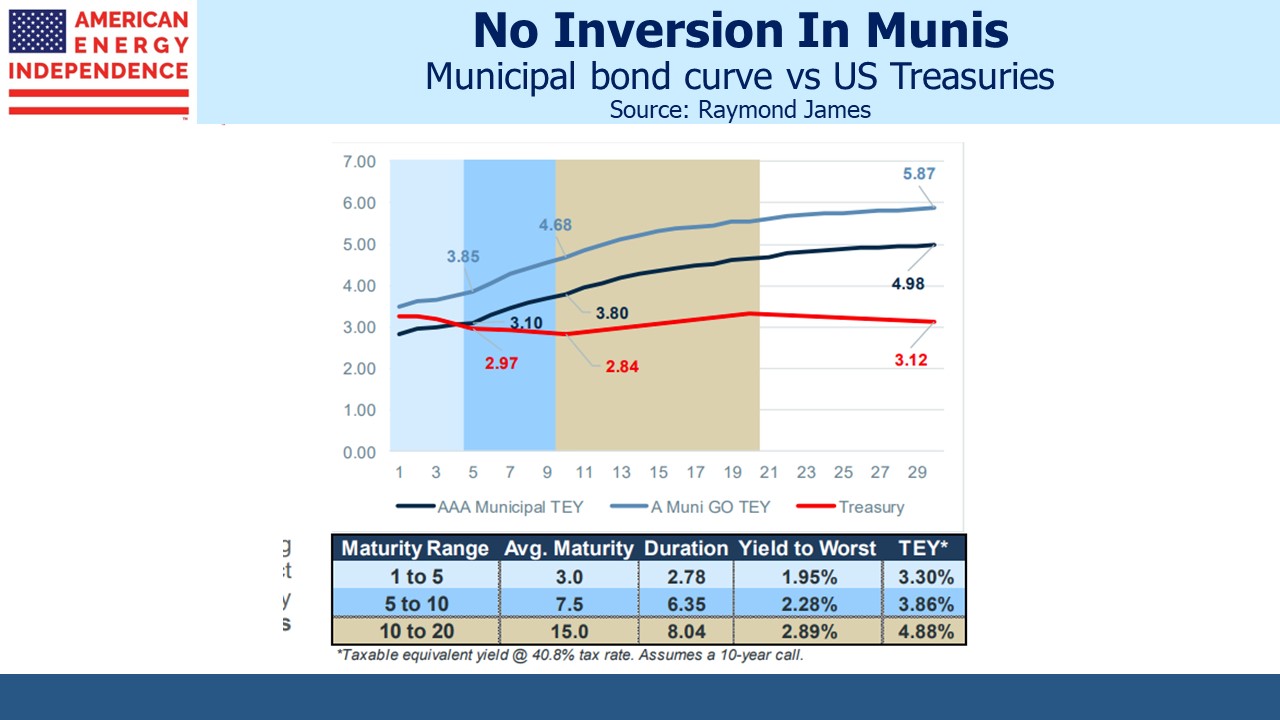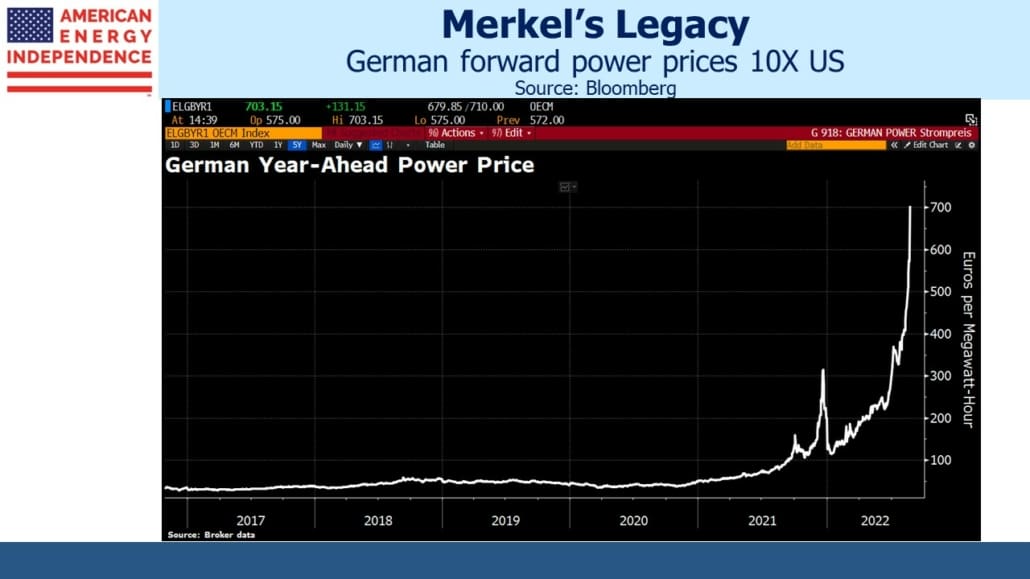Muni Bonds Suggest No Recession
Many readers enjoyed the recent blog posts on Bad Investment Ideas. Our criticism of ESG was especially popular, with many assessing it as a meaningless investment fad. ESG isn’t inherently bad – who doesn’t want better “G” (Governance) at their portfolio companies? But if every company can find someone to rate them highly on ESG, it’s clearly not a very demanding metric.
We did receive some pushback on bonds, especially the comment that the entire asset class was not fit for purpose and should be abandoned. One investor noted that he’s finding value in two-year treasury notes yielding 3.3%. Bob Radli from Palm Beach Gardens, FL, a long-time investor, said we were overlooking the benefits of holding long-term municipal bonds with yields over 4%. He pointed out that bonds offer important stability, especially as investors approach retirement.
It’s true that this year’s bear market in bonds has improved their value even if they haven’t provided much diversification to date. Holding 100% equities is only appropriate for a narrow set of long-term investors, and while we think government bonds continue to provide poor value, cash yields have been edging up as the Fed normalizes monetary policy.
We’ve noted in the past that a barbell of stocks and cash can be used to create an income-generating portfolio with low risk (see The Continued Sorry Math Of Bonds). Assuming S&P500 dividends grow at 4%, as little as a fifth of a portfolio in stocks with the rest held in cash match the after-tax return of a ten-year bond yielding 3%*. A 20% drop in stocks would reduce the barbell portfolio by 4%. The ten-year bond would fall in value by that amount with around a 0.50% rise in yields.
I suggested to Bob that one-year munis might be safer because they’re more “cash-like” and if the Fed has to tighten more than expected the investor benefits from rolling over into higher yields. Interestingly though, unlike the treasury yield curve, the municipal bond yield curve is positively sloped. There is a penalty in the form of lower yields for choosing shorter maturities.
Municipal bond investors will not be surprised at this, but for decades muni yields were lower than treasuries because of their tax-advantaged status. Index-type data on munis is hard to find, but digging into the archives of the Federal Reserve of St. Louis it’s clear that treasury yields dipped below municipal bonds during the 2008 Great Financial Crisis (GFC) and have stayed there ever since.
It’s a measure of the distorting effect Quantitative Easing (QE) has had on the bond market. Munis are overwhelmingly owned by individuals. The law requires the Fed to avoid credit risk in its bond holdings, hence QE hasn’t depressed muni bond yields the way it has treasuries and other sectors whose yields are linked, such as Mortgage Backed Securities (MBS) and investment-grade corporate bonds.
Long-term yields would be higher without QE. The positive muni yield curve suggests that absent QE, ten-year notes would be above 4.5% based on the relationship that prevailed pre-GFC. The inverted treasury yield curve isn’t forecasting a recession, it’s reflecting the distortion the Fed’s bloated balance sheet has created.
If the Fed is to get ten-year treasury yields high enough to slow the economy, meaning at least 4%, it’s going to require short-term rates well above that. Two years ago they reinterpreted their mandate to tolerate inflation above target for longer the past. It was unfortunate timing because the fiscal and monetary response to Covid provided a huge stimulus to the economy. Today’s high inflation is well above what they had in mind.
This Friday chair Powell will give a much-anticipated speech that may offer clues to the near-term path of rates. A chastened FOMC shows little inclination to claim inflation vanquished, even though most observers and their own Summary of Economic Projections forecast a substantial decline over the next couple of years.
Short-term rates may go much higher if that’s what’s needed to push bond yields up – but the exit ramp will always be available in the form of still modest inflation expectations which support the “transient” narrative even if Powell has abandoned the term. There’s always the chance they’ll consider selling some of their MBS holdings as the appropriate reversal of QE. It’s unlikely, so a sharp move in the market would result.
Recent data suggests a US recession is unlikely. By contrast, Europe is grappling with natural gas prices 7-8X the US and wholesale power prices even a year out that are 10X the US. Belgium’s prime minister has warned that the next, “…five to ten winters will be difficult.” Presumably, he won’t be in power for most of them.
The positively sloped curve for municipal bond yields highlights the continued downward pressure exerted on treasury yields by the Fed’s decision to not sell any of their QE-acquired holdings. The direction of interest rates remains delicately balanced. We may learn more on Friday.
*The other assumptions are: 1.5% dividend yield on S&P500; 25% combined Federal and state tax on dividends; 35% tax rate on interest income; average 2% cash return over ten years; unchanged S&P500 yield in ten years.
More By This Author:
Bad Investment Ideas Still Flourish II
Pipeline Stocks Resume Their Rally
America Dodges The Energy Crisis
Disclosure: We are invested in all the components of the American Energy Independence Index via the ETF that ...
more




